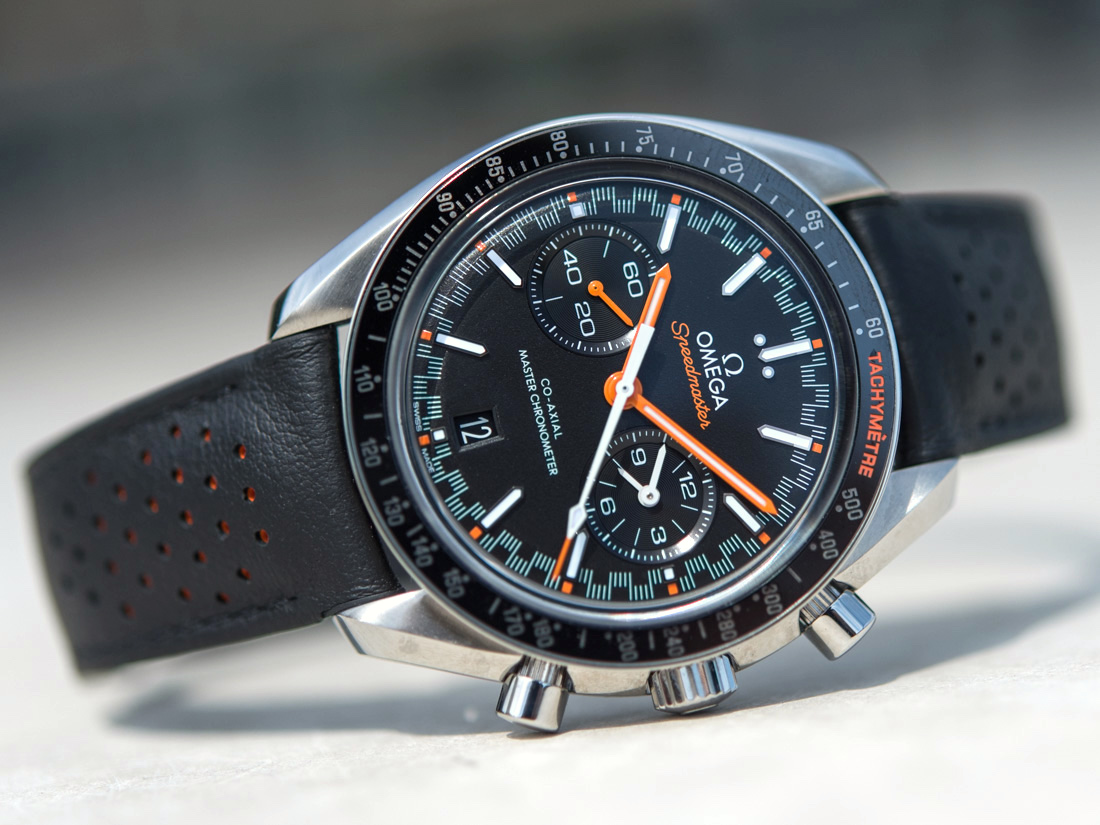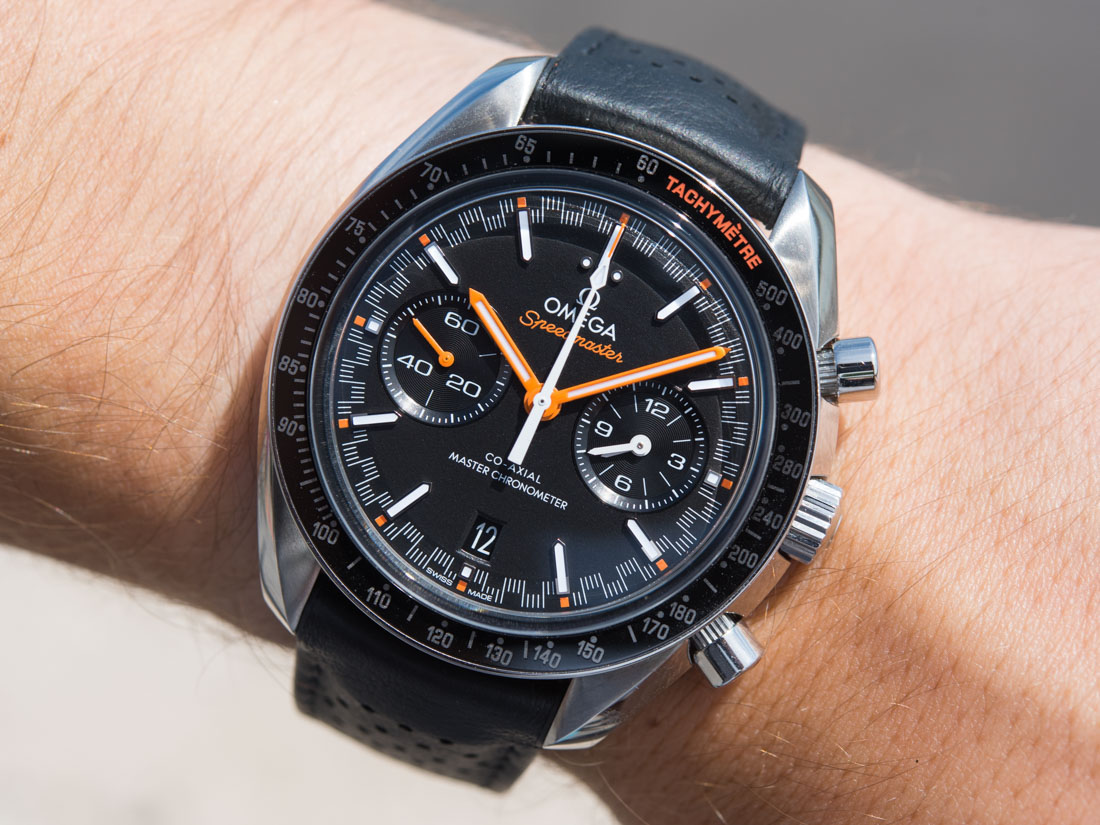
The new-for-2017 Omega Speedmaster Racing Master Chronometer reference 329.32.44.51.01.001 is the modern – and, until now, quite fat – Speedmaster Moonwatch put on a diet. Yeah, right, it’s just as wide from the front, but very noticeably slimmer in its profile. It is not all looks and no smarts either, as it now packs the latest generation, METAS-certified, 15,000 Gauss-resistant Master Chronometer caliber 9900. Let’s see if all that, a lower price, and some orange accents suffice to make one’s heart go racing. There are a few quirks to note as well.
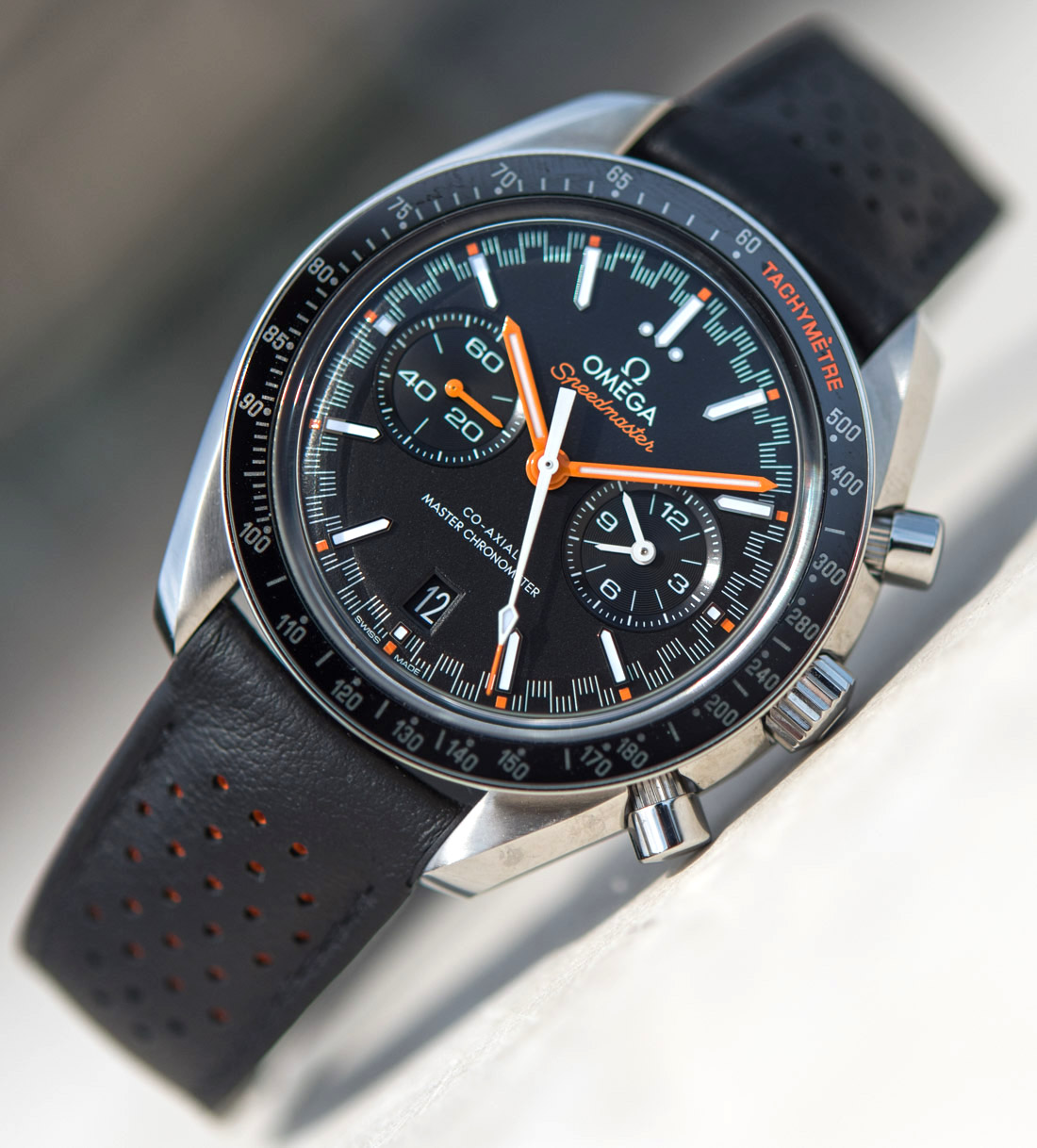
Brief History Of Not The Speedmaster…
…Instead, I will just keep it short and concentrate on its most modern iteration. Although to me it feels like it was way longer ago, it actually happened in 2011 that Omega launched the Speedmaster Co-Axial Chronograph, a modern Speedmaster equipped with an all-new, 9300-series, two-register, automatic chronograph movement. Since then, they have officially called this collection a range of different and wildly confusing names, including the Speedmaster Moonwatch (yes, that’s right), although it very much belongs to that group of 99.99999% of all watches that have never ever been to the moon. I mean it. Google Omega Speedmaster Moonwatch and see what comes up first – it’s this collection and not the classic and actual Moonwatch Speedy. The closest this modern Speedy has been to the moon is when it received a cool moon phase indication recently, with a stellar blue-dial model that Ariel reviewed here.
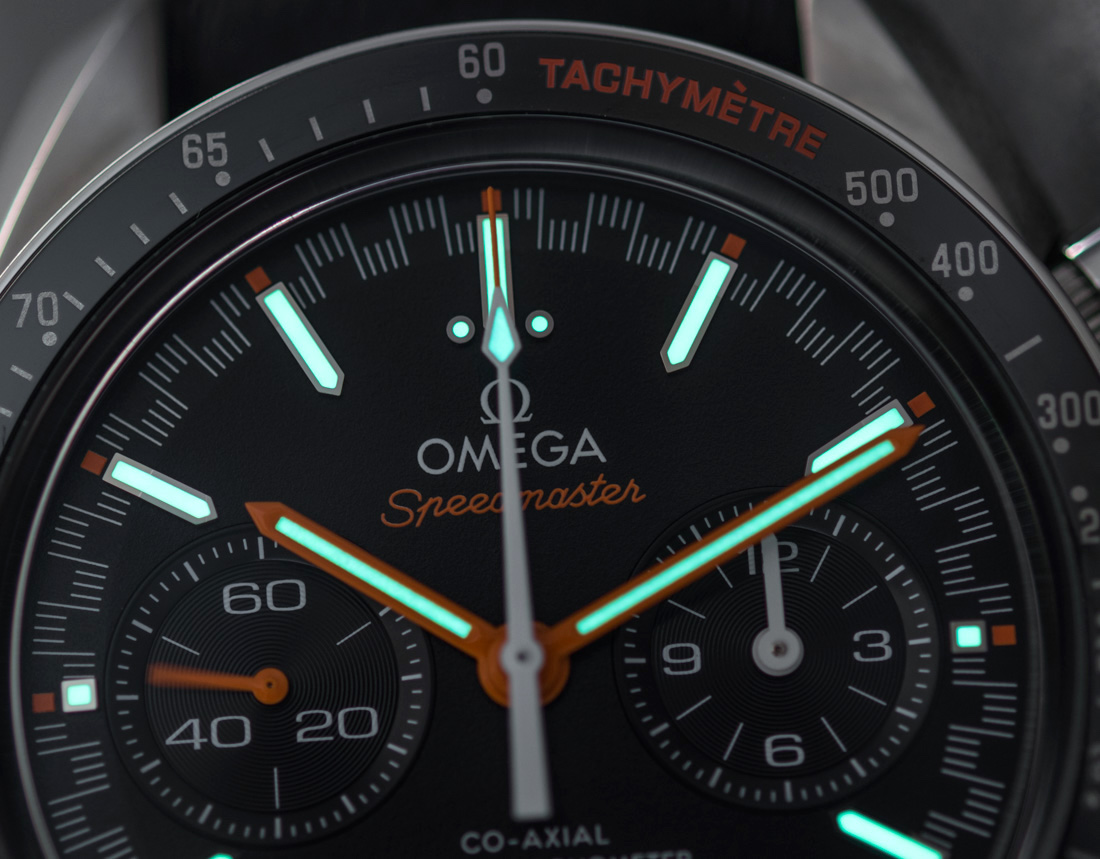
This is to say that around the classic Omega Speedmaster “Moonwatch” (the one that did go to the moon and back) grows an increasing variety of other Omega Speedmaster chronographs. And while the “original” Moonwatch I bet will remain unchanged until we colonize the moon, it also is one of the very few watches that deserve the label “iconic.” The good news this entails though is that the rest of the Speedmaster collections are free to change and evolve as Omega and the market dictates. Now, with the Omega Speedmaster Racing Master Chronometer, we see what that unequivocally dictated direction is, and I am pleased to see and report: it means more wearable, technically more advanced, and visually more fascinating.
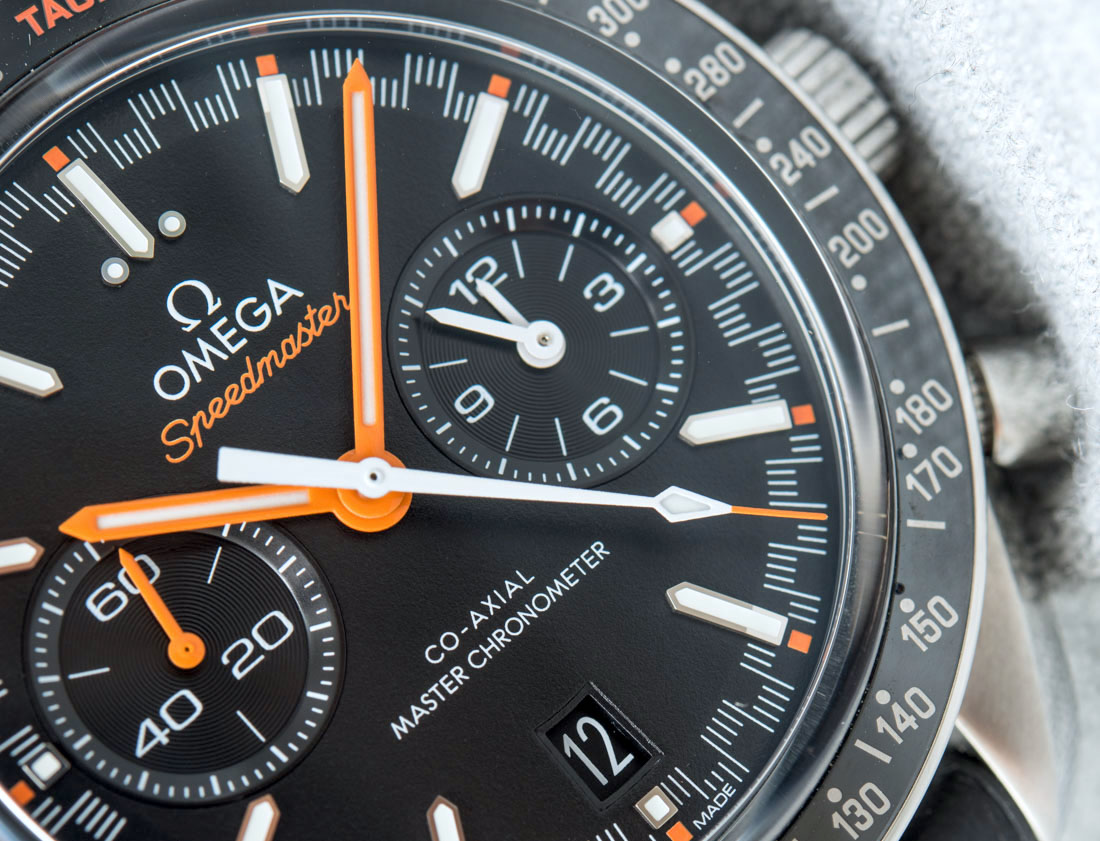
Before we move on, a quick word about the history of the racing dial, and especially an interesting quirk that you may want to know, next time someone poses as a historian and gives whatever storied explanation for the racing dial’s existence: “Despite great research and theory, the exact origin and purpose of these 1968 models is still shrouded in mystery.” These are Omega’s words on the racing dial – and I appreciate them being up-front about this fact instead of making up some faux, misty-eyed racing story instead.

What’s New For The Speedmaster
Cutting straight to specifics: the case is 1.1mm thinner when compared to the Speedmaster Moonwatch (still referring to the 2011-model that didn’t go to the moon). The case itself is still crafted from stainless steel and is still 44.25mm-wide. Omega says that they have changed the design of the sapphire crystals to shave off this bit of thickness. About how it actually wears and looks on the wrist just a bit later.
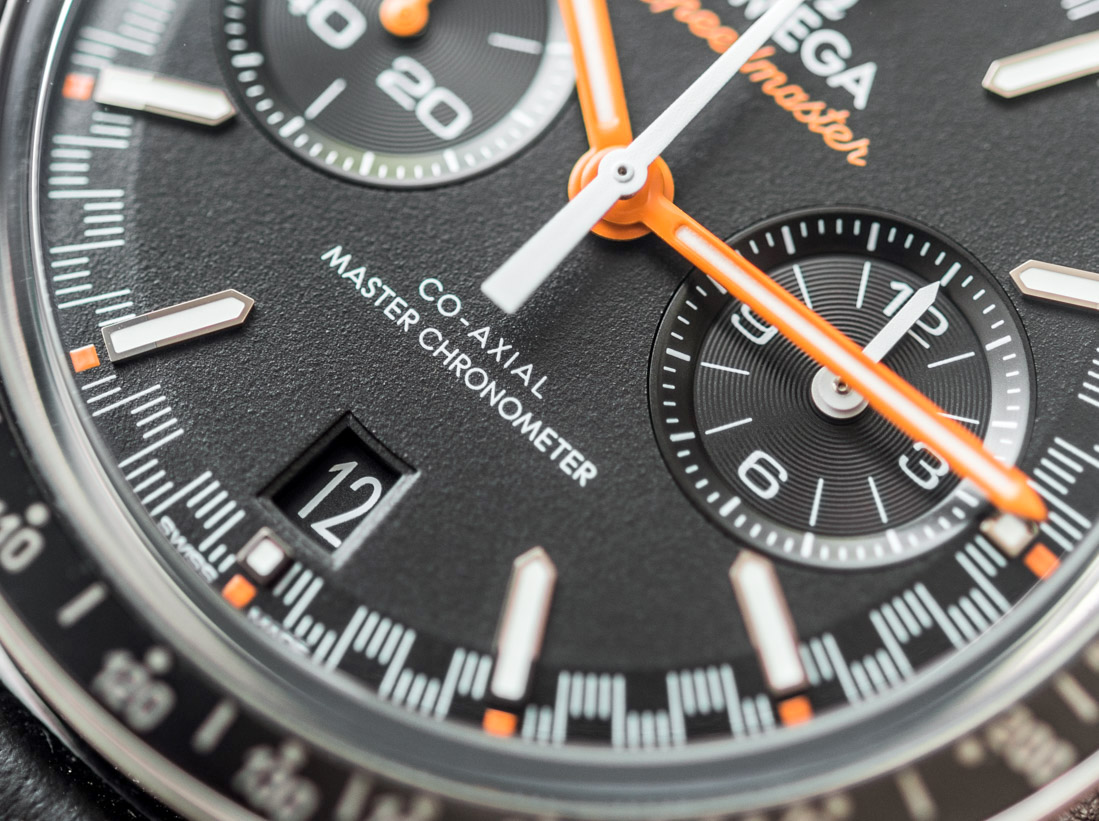
Another important update is how the 9300 caliber has been updated to the 9900 version. There’s plenty of boasting on both the front and back to help you figure out if this is the latest generation of Omega in-house movements: the dial says “Co-Axial Master Chronometer” on it while the rotor has “Omega Master Co-Axial 9900” written in red. I was there at Omega’s event in Geneva in late 2014 when they announced their new partnership with METAS, and I also recall how many times since then I’ve had to fact-check the exact wording Omega uses to refer to these calibers.
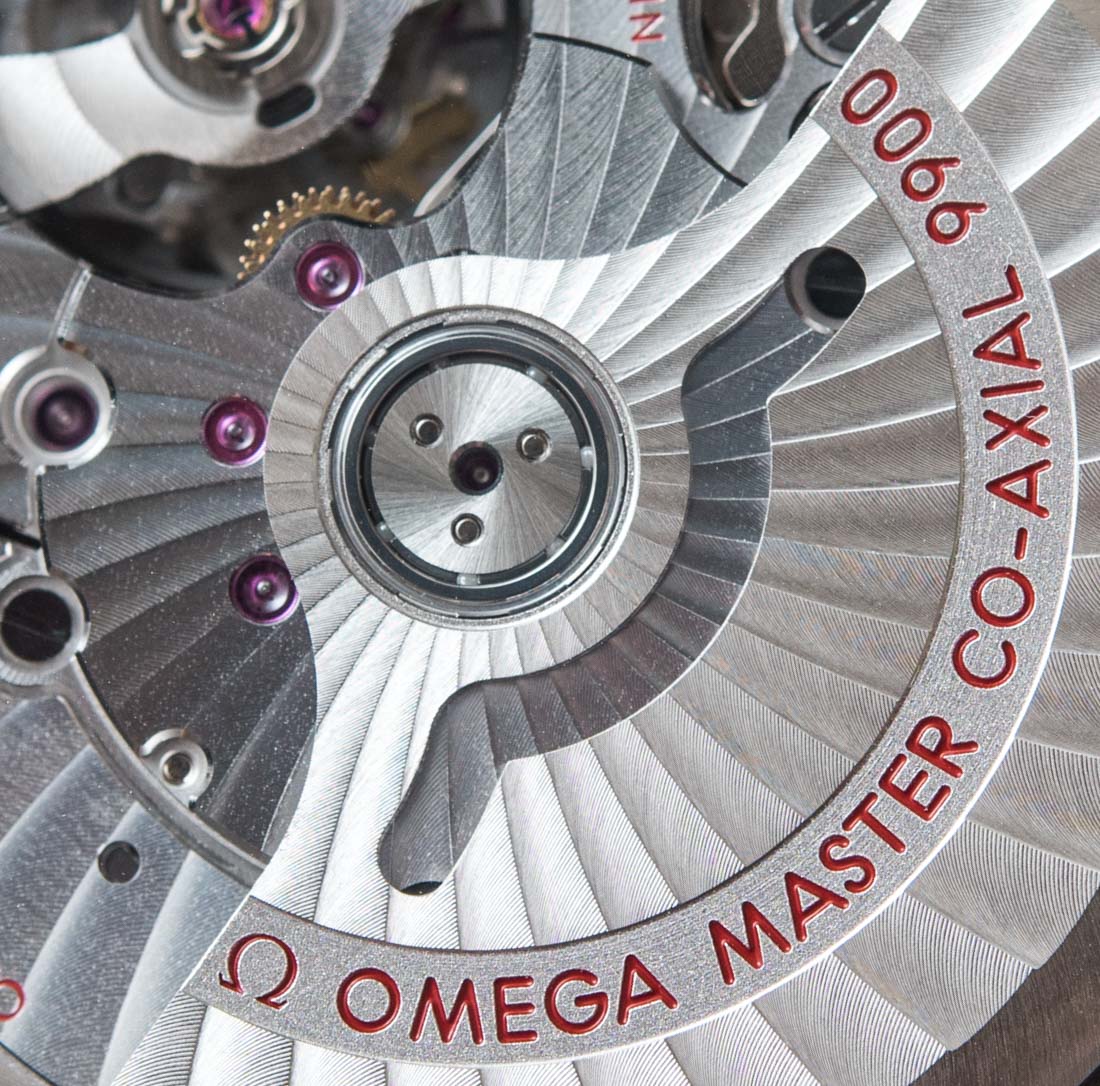
It is quite confusing since the exact same watch refers to two very similar things in two different ways: as it turns out, “Co-Axial Master Chronometer” and “Master Co-Axial” mean that this watch is a chronometer (as only COSC-certified watches can be called as such), and, as the text on the rotor explains, also METAS-certified tested in-house by Omega. More on the movement below. Beyond these updates, the racing dial returns once more – if I remember correctly, as a first for this larger Speedmaster – and with it also comes a new, perforated, sporty-looking strap. It really cannot possibly get any more confusing than Co-Axial Master Chronometer and Master Co-Axial – not to mention that not too long ago Omega Seamaster 300 dials said Master Co-Axial Chronometer, that already had the “Master Co-Axial” bit in it.
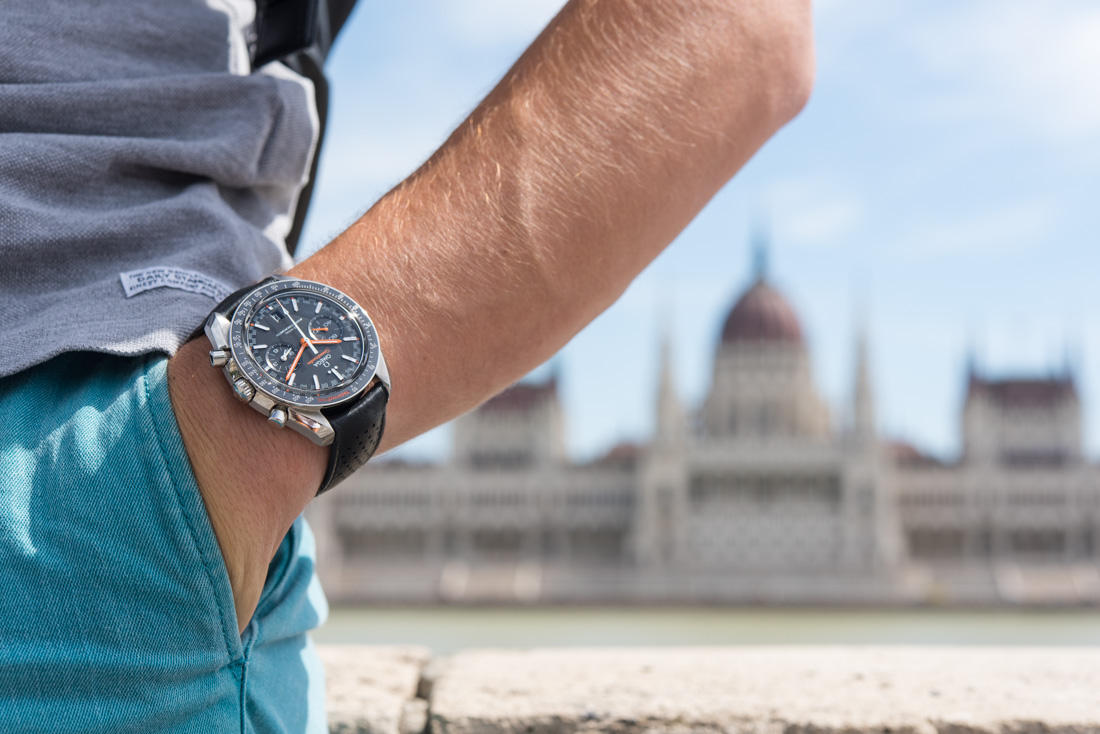
Wearability
Time to take a closer look at these novel elements of the Omega Speedmaster Racing Master Chronometer and so let us begin with wearability. A day into wearing the watch and after adjusting the strap a few times, I realized that the Speedmaster Racing (with the strap set to offer a secure fit – which is how I prefer to wear watches) wears like loosely set, slim watches do.
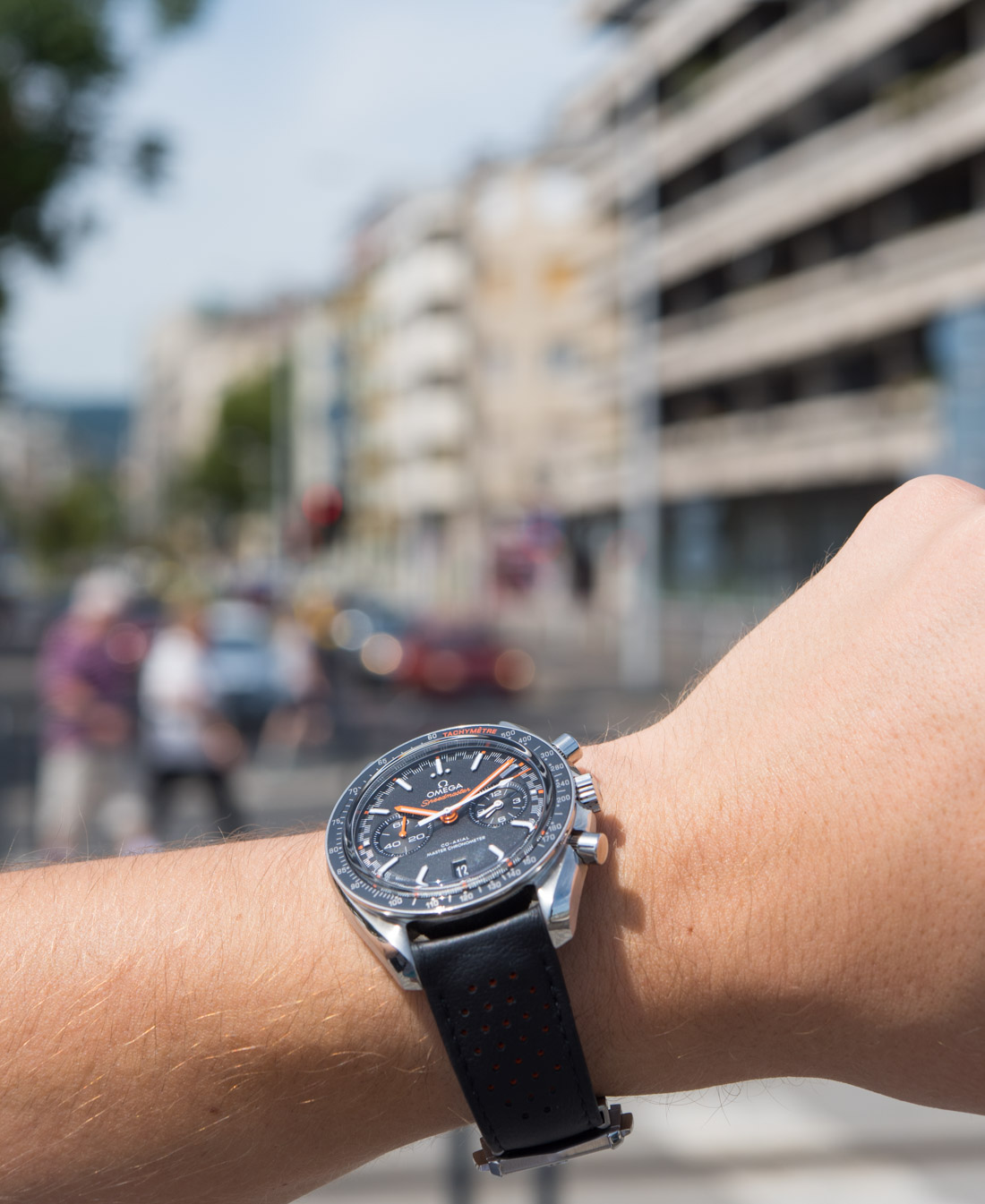
The eye-trickery comes from the fact that the Speedmaster Racing has a very thin case profile – in the traditional sense, that is. The super long, nicely curved, polished edge runs from the end of the upper lug and doesn’t end until the other corner of the watch. For one, this angled, shiny, sweeping curve makes the watch appear longer and slimmer. Underneath it is the slender, vertical case profile that is brushed and hence darker, making it appear yet slimmer to the eye.
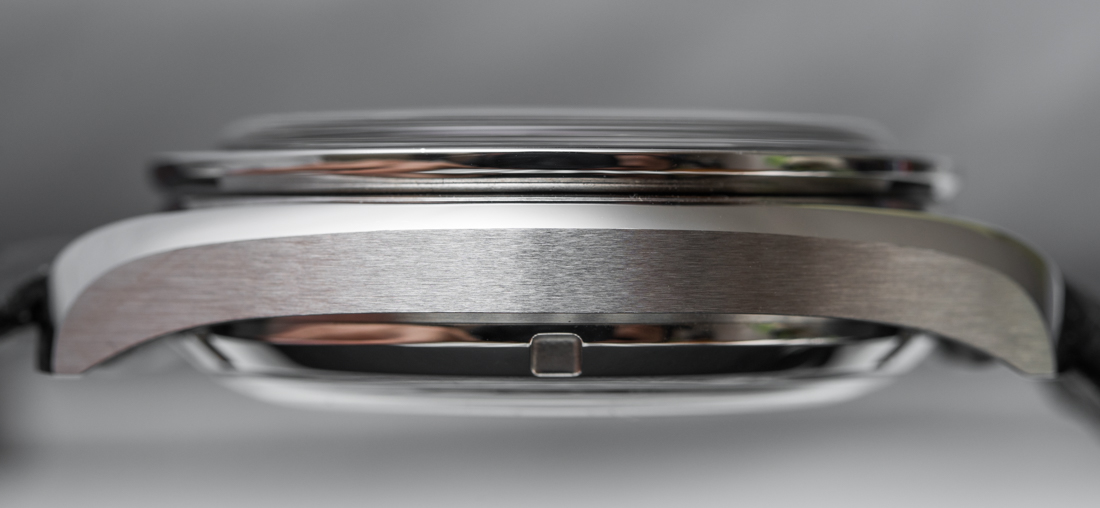
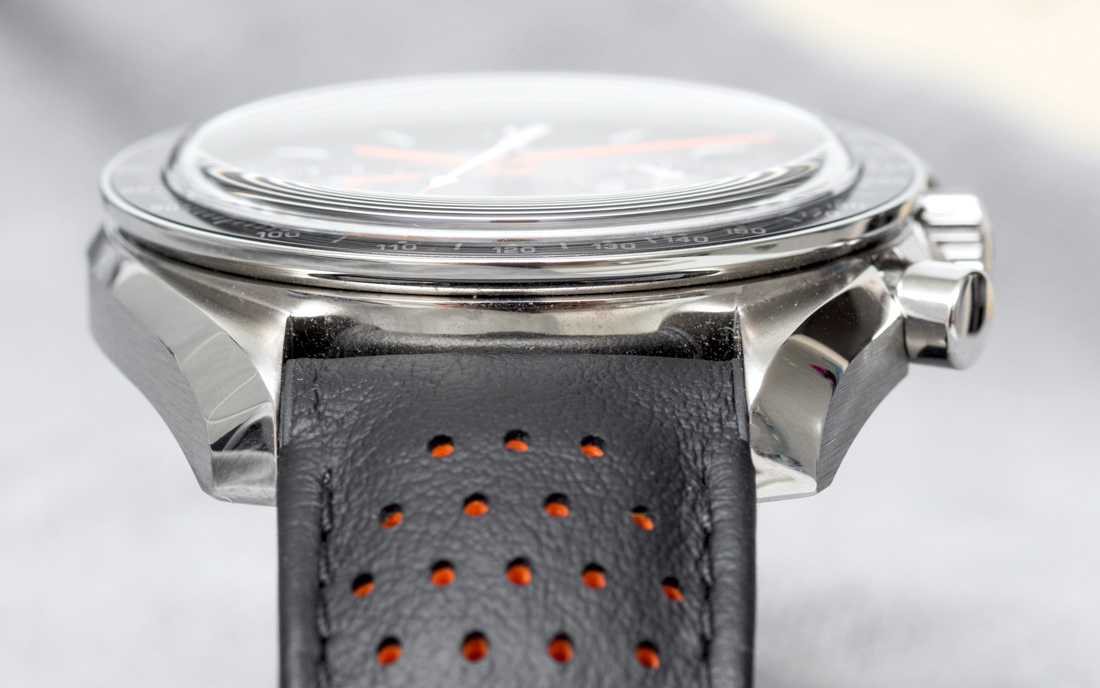
Now, the trick is in the fact that the case-back itself is just as thick as the case-band, but it is tucked away in a way that most of the time when the watch is on the wrist it cannot be seen at all. So, when you look at the watch on your wrist, it gives the illusion of a slim watch that sits a finger’s width above the wrist – this is possibly the best way to describe it.
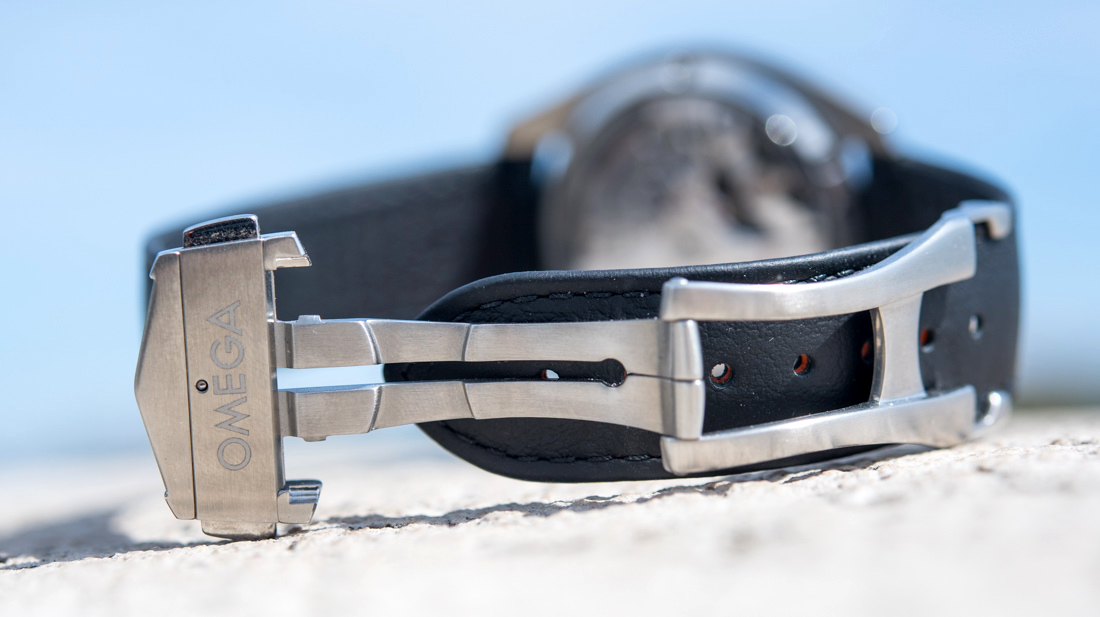
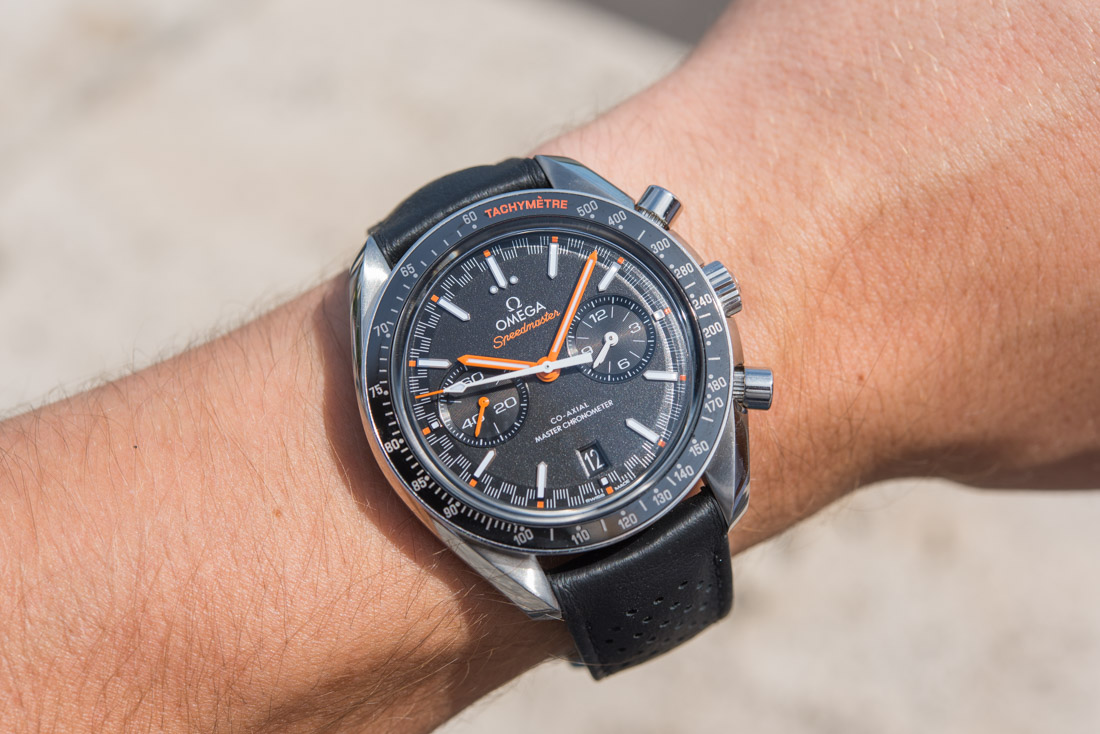
While it may sound clumsy – loosely worn watches I find look clumsy not all, but the majority of times – in truth it actually looked just fine in this instance. Because the watch sits securely, it does not wobble around, but it still has that slim profile that renders it more of a regular, nice watch, than the brutish showpieces I consider Omega’s other 9300/9900-equipped watches to be. The Seamaster and Speedmaster Chronographs are super thick at over 16mm, while this one measures in just below 15mm and looks even thinner than that figure would suggest.

